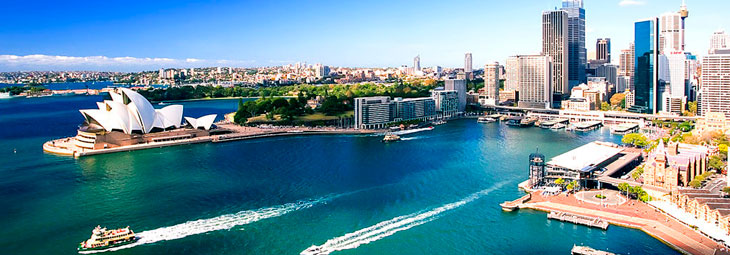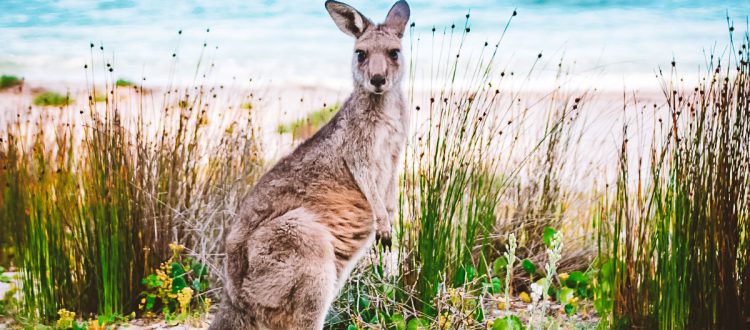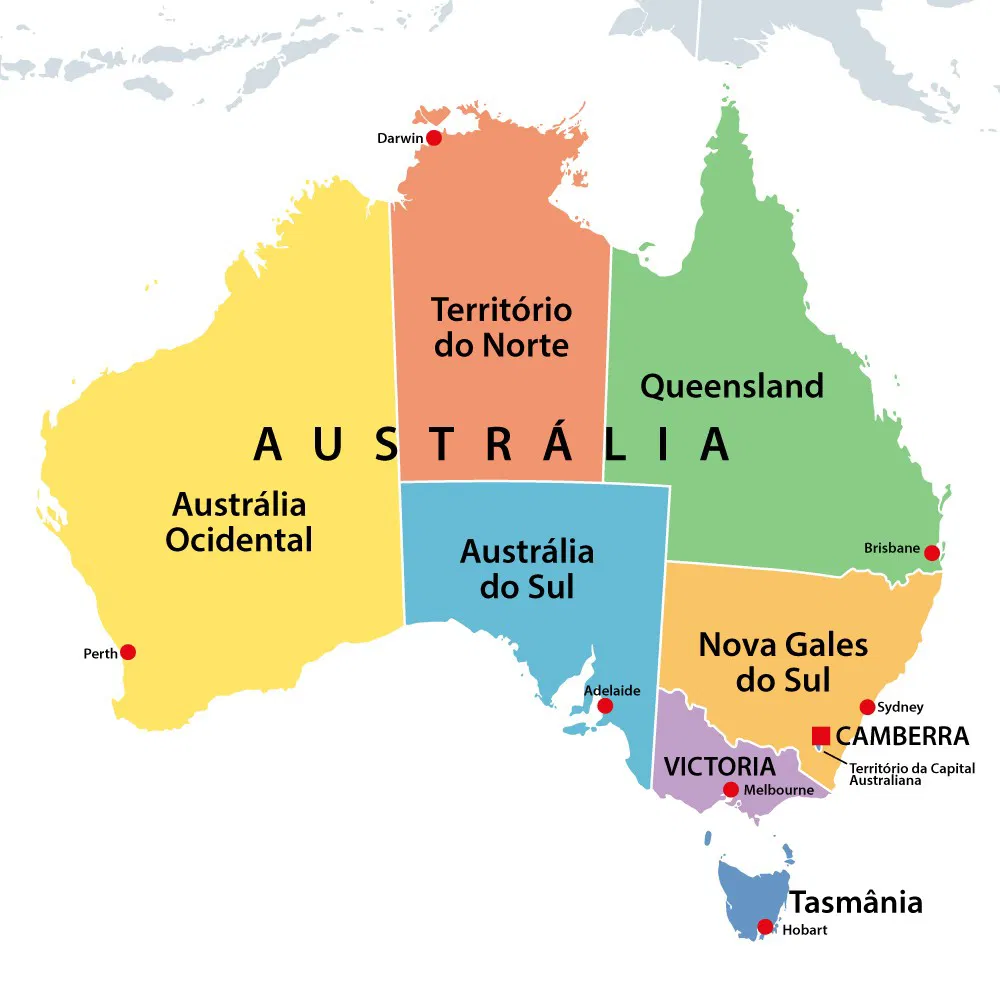Australia, the land Down Under, is a captivating continent that holds a wealth of surprises and natural wonders. From its ancient Indigenous heritage to its unique wildlife and architectural marvels, this vast and diverse country never ceases to amaze. Delve into the fascinating facts that will uncover the hidden gems of Discovering Australia.
Did you know that Australia is home to over 750 reptile species, more than any other country? Or that the world’s oldest fossil, estimated to be around 3.4 billion years old, was discovered right here? Australia’s sheer size is equally astonishing, stretching as wide as the distance from London to Moscow, with the largest property bigger than the entire country of Belgium. Even the country’s population of kangaroos, estimated at around 50 million in 2017, exceeds the human population of 25 million.
These are just a few of the fascinating facts that make Discovering Australia an adventure like no other. Whether you’re exploring the ancient Indigenous culture, marveling at the natural wonders, or uncovering the unique wildlife, this captivating continent is sure to leave you in awe.
Ancient Beginnings: 45,000 Years of Indigenous Heritage
Australia’s Indigenous culture is one of the oldest continuous living cultures in the world, with an astonishing history tracing back over 45,000 years. This remarkable legacy is evident across the country, from the sacred rock formations of Uluru to the ancient rock art found in remote regions.
Aboriginal Connection to Sacred Sites
Uluru, the iconic sandstone monolith in central Australia, holds deep spiritual significance for the Anangu people, the traditional owners of the land. Believed to have been created by ancestral beings during the Dreamtime, Uluru is a sacred site where the Anangu people conduct cultural ceremonies and rituals, connecting them to their ancient past.
Early Chinese Exploration and Trade
Long before European explorers arrived, China had established trade connections with the Indigenous peoples of Australia. As early as the 1400s, Chinese traders visited the northern coast, collecting valuable commodities like sea cucumbers and exchanging goods with the local Aboriginal communities. These early interactions highlight the rich history of cultural exchange in the Exploring the Outback.
Traditional Dreamtime Stories
The Indigenous Culture of Australia is deeply rooted in the Dreamtime, a fundamental concept in Aboriginal mythology that explains the creation of life and the world. These traditional stories, passed down through generations, offer a unique and enduring perspective on the Australian History and the spiritual connection between the land and its first peoples.

“The Dreamtime is not just a story or a belief, it is a way of life. It is the essence of our being, the very fabric of our existence.”- Noel Pearson, Aboriginal leader
The Great Southern Land’s Natural Wonders
Australia’s vast and diverse landscapes are home to an abundance of natural wonders that captivate visitors from around the world. From the iconic Great Barrier Reef to the mesmerizing pink lakes and the world’s largest sand island, this country offers a treasure trove of Natural Wonders, Coastal Experiences, and Sustainable Tourism opportunities.
The Great Barrier Reef’s Hidden Secrets
Stretching over 2,300 kilometers along the Queensland coast, the Great Barrier Reef is the world’s largest coral reef system, visible even from space. This natural wonder comprises over 2,900 individual reefs, 900 islands, and is home to an astounding 1,500 fish species and 400 hard coral species. Beneath the surface, the reef’s hidden secrets unfold, offering Coastal Experiences and Sustainable Tourism opportunities for divers and snorkelers to explore its vibrant, diverse marine life.
Pink Lakes and Limestone Plains
Australia is home to several pink lakes, including the captivating Lake Hillier on Middle Island. The unique color of these lakes is attributed to the presence of Dunaliella salina, a type of algae that thrives in the high salinity conditions. Beyond the pink lakes, the country also boasts the Nullarbor Plain, the world’s largest single exposure of limestone bedrock, covering an area of 200,000 square kilometers. These Natural Wonders showcase the geological diversity and beauty of the Australian landscape.
World’s Largest Sand Island: Fraser Island
Stretching over 120 kilometers, Fraser Island is the world’s largest sand island and a UNESCO World Heritage Site. This natural wonder is a testament to the power of wind and water. With its towering sand dunes, ancient rainforests, and pristine freshwater lakes. Fraser Island offers visitors the chance to experience the Coastal Experiences and Sustainable Tourism that Australia is renowned for, as they explore this unique and captivating destination.
| Natural Wonder | Key Facts |
|---|---|
| Great Barrier Reef |
|
| Pink Lakes |
|
| Nullarbor Plain |
|
| Fraser Island |
|
“Australia’s natural wonders are truly awe-inspiring, from the vibrant Great Barrier Reef to the mesmerizing pink lakes and the world’s largest sand island. These destinations offer a unique and unforgettable Coastal Experiences and Sustainable Tourism opportunities for visitors to explore and appreciate the country’s remarkable natural heritage.”
Discovering Australia Through Its Unique Wildlife
Australia is a land teeming with an astonishing array of wildlife encounters that captivates both local and international adventure travel enthusiasts. From the iconic marsupials like koalas and kangaroos to the enigmatic platypus and venomous creatures. This country is a veritable treasure trove of sustainable tourism opportunities.
The platypus, an egg-laying mammal with a duck-like bill, was once thought to be a hoax when first sent to England. These extraordinary creatures are not only unique in their physiology but also possess venom strong enough to kill a small dog. Similarly, Australia is home to some of the world’s most venomous creatures. Including the taipan snake, Sydney funnel-web spider, and box jellyfish.
Kangaroos and emus, featured prominently on the Australian coat of arms. Are fascinating in their own right. These iconic animals cannot walk backwards, a testament to their incredible adaptability to the wildlife encounters in their natural habitat.
“More than 80% of Australia’s plants, mammals, reptiles, and frogs are unique to the country and are not found anywhere else in the world.”
The country’s sustainable tourism efforts have also shone a spotlight on its unique wildlife. The Fitzroy River Turtle, classified as Vulnerable on the IUCN list, and the endangered Tasmanian Devil are just two examples of the conservation challenges faced in preserving Australia’s natural heritage.
From the elusive Numbat to the transparent-winged Pellucid Hawk Moth. Australia’s wildlife encounters offer a wealth of adventure travel opportunities for nature enthusiasts and curious explorers alike. As we navigate the delicate balance between sustainable tourism and environmental preservation. The wonders of Australia’s unique wildlife continue to captivate and inspire both locals and global visitors.

Discovering Australia: Architectural Marvels and Historical Tales
Australia is a land steeped in captivating history, and its architectural wonders stand as testament to the ingenuity and creativity of its people. From the iconic Sydney Opera House, inspired by the natural world. To the dramatic opening of the Sydney Harbour Bridge. These structures have become symbols of the country’s rich cultural heritage.
Sydney Opera House’s Natural Inspiration
The striking sails of the Sydney Opera House, designed by the renowned architect Jørn Utzon. Were inspired by the organic forms found in nature. Utzon’s vision was to create a building that seamlessly blended with its stunning coastal setting. Drawing inspiration from elements like birds, clouds, and even walnuts. When combined, the building’s distinct shells would form a perfect sphere. Showcasing the architect’s meticulous attention to detail and his desire to harmonize the structure with its surroundings.
Sydney Harbour Bridge’s Dramatic Opening
The opening of the iconic Sydney Harbour Bridge in 1932 was marked by a moment of high drama. As the Premier was about to cut the ceremonial ribbon. A figure on horseback, later identified as Francis De Groot. Charged forward and slashed the ribbon before the official ceremony could commence. This unexpected incident added to the bridge’s already legendary status. Solidifying its place as a symbol of Australia’s pioneering spirit and the country’s ability to embrace the unexpected.
Historical Landmarks and Their Stories
Australia’s rich history is embodied in its diverse array of landmarks, each with its own captivating tale. The nation’s first police force, for example, was composed of well-behaved convicts. A testament to the country’s complex and fascinating past. Similarly, the once-illegal practice of daytime swimming at beaches has evolved into a beloved Australian pastime. Showcasing the country’s ability to adapt and embrace change. Even the realm of aviation has its own remarkable stories, such as the 1940 incident where two aircraft collided mid-air in New South Wales but managed to land safely while still attached to one another.












